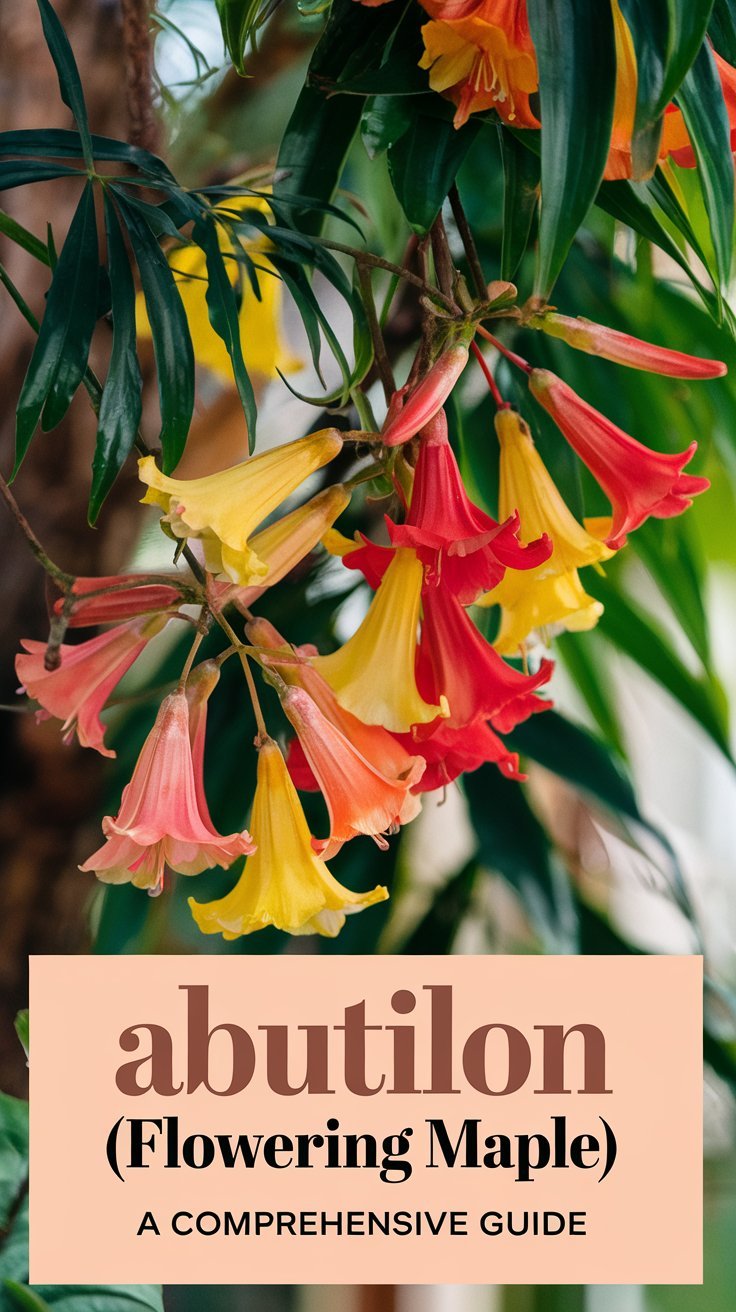Discover how to grow and care for Abutilon (Flowering Maple) with expert tips from Ashley Scott. Explore varieties, pruning, container gardening, and where to buy this stunning plant!

With 10 years of gardening experience, I’ve fallen in love with the Flowering Maple (Abutilon)—a plant that’s neither a maple nor a lantern, despite its nicknames like “Chinese Lantern” or “Indian Mallow.” Its delicate, hibiscus-like blooms and lush foliage make it a showstopper in gardens and homes alike. Let’s dive into everything you need to know about this versatile plant!
What Is Abutilon?

Abutilon, commonly called Flowering Maple or Indian Mallow, is a tropical-to-subtropical shrub known for its maple-shaped leaves and vibrant, pendulous flowers. Native to South America and Asia, it thrives in USDA zones 8–11 but adapts well to containers in cooler climates.
Fun Fact: The name “Chinese Lantern” comes from its bell-shaped blooms that resemble paper lanterns!
Top Abutilon Varieties to Grow
Abutilon offers over 150 species, but here are my favorites:
1. Abutilon ‘Tiger Eye’
- Features: Golden-yellow flowers with red veins.
- Size: 4–6 feet tall.
- Perfect For: Adding a tropical vibe to patios.
2. Abutilon ‘Red Tiger’
- Bold red-and-yellow striped blooms make this variety a standout.
3. Abutilon megapotamicum (Trailing Abutilon)
- Dangling red-and-yellow flowers ideal for hanging baskets.
4. Abutilon pictum ‘Thompsonii’
- Variegated leaves with salmon-pink flowers.
For more inspiration, check out my guide to unique flowering shrubs on USA Garden Hub.
How to Care for Abutilon: Sun, Soil, and Water
Sunlight Needs
Abutilon loves bright, indirect light. In hotter regions (Zone 9+), afternoon shade prevents leaf scorch. Indoors, place it near an east-facing window.
Soil Requirements
Use well-draining soil mixed with compost. I swear by a 50-50 blend of potting mix and perlite for container plants.
Watering Tips
- Water when the top 1–2 inches of soil feel dry.
- Avoid soggy roots—overwatering causes yellow leaves.
Growing Abutilon in Pots: My Success Tips
I’ve grown Abutilon in containers for years! Here’s how:
- Choose a 12–16-inch pot with drainage holes.
- Use a peat-free potting mix to retain moisture.
- Fertilize monthly with a balanced liquid fertilizer (10-10-10).
Pro Tip: Rotate pots weekly for even growth. For more container gardening ideas, visit my article on growing tropical plants indoors.
Pruning Abutilon for More Blooms
Prune in early spring to encourage bushier growth:
- Cut back leggy stems by one-third.
- Remove dead or crossed branches.
- Deadhead spent flowers to prolong blooming.
Warning: Wear gloves—Abutilon sap can irritate skin!
Common Problems & Solutions
Pests
- Whiteflies and spider mites love Abutilon. Treat with neem oil.
- Aphids? Blast them off with water.
Diseases
- Root rot: Avoid overwatering.
- Leaf spot: Improve air circulation.
Where to Buy Abutilon Plants
I recommend these trusted sources:
- Local Nurseries: Check for healthy, pest-free plants.
- Online Retailers: Logee’s Plants (great for rare varieties).
- Etsy: Search for “Abutlion cuttings” for budget-friendly options.
FAQs: Your Questions, Answered
Q: Where is the best place to plant Abutilon?
A: Morning sun + afternoon shade! Protect from harsh winds.
Q: Is Abutilon frost-tolerant?
A: No—bring pots indoors if temps drop below 25°F.
Q: Why are my Abutilon’s leaves turning yellow?
A: Overwatering or nutrient deficiency. Try a slow-release fertilizer.
Final Thoughts
Abutilon is a low-maintenance gem that rewards you with year-round blooms. Whether you’re growing the fiery ‘Red Tiger’ or the elegant ‘Chinese Lantern,’ this plant is sure to dazzle.
Got questions? Share your Abutilon stories in the comments below! And don’t forget to explore my guide to pruning flowering shrubs for more tips.




